Characterizing the Conductivity and Enhancing the Piezoresistivity of Carbon Nanotube-Polymeric Thin Films
Abstract
:1. Introduction
2. Experimental Details
2.1. Thin Film Fabrication
2.2. Quasi-Static Cyclic Tensile Test
2.3. Two-Point Probe Resistance Measurements
3. Results and Discussion
3.1. Piezoresistivity Characterization
3.2. Characterization of MWCNT-PSS-PVDF Thin Film’s Conductivity
4. Conclusions
Acknowledgments
Author Contributions
Conflicts of Interest
References
- Holbery, J.; Houston, D. Natural-fiber-reinforced polymer composites in automotive applications. JOM J. Miner. Met. Mater. Soc. 2006, 58, 80–86. [Google Scholar] [CrossRef]
- BMW Group. BMW i: At A Glance. 2017. Available online: https://www.bmw.com/en/topics/fascination-bmw/bmw-i-2016/at-a-glance.html (accessed on 21 April 2017).
- Boeing. 787 Dreamliner by Design—Advanced Composite Use. 2017. Available online: http://www.boeing.com/commercial/787/by-design/{#}/advanced-composite-use (accessed on 21 April 2017).
- Airbus. A350 XWB—Innovation: Modern Construction. 2017. Available online: http://www.a350xwb.com/innovation/ (accessed on 21 April 2017).
- Bakis, C.E.; Bank, L.C.; Brown, V.; Cosenza, E.; Davalos, J.; Lesko, J.; Machida, A.; Rizkalla, S.; Triantafillou, T. Fiber-reinforced polymer composites for construction—State-of-the-art review. J. Compos. Constr. 2002, 6, 73–87. [Google Scholar] [CrossRef]
- Ramakrishna, S.; Mayer, J.; Wintermantel, E.; Leong, K.W. Biomedical applications of polymer-composite materials: A review. Compos. Sci. Technol. 2001, 61, 1189–1224. [Google Scholar] [CrossRef]
- SpaceX. Falcon 9 and Dragon to Return Astronauts to Space. 2017. Available online: http://www.spacex.com/falcon9 (accessed on 21 April 2017).
- Lopatto, E. SpaceX Even Landed the Nose Cone From Its Historic Used Falcon 9 Rocket Launch. The Verge. 2017. Available online: http://www.theverge.com/2017/3/30/15132314/spacex-launch-fairing-landing-falcon-9-thruster-parachutes (accessed on 21 April 2017).
- Gardiner, G. Structural Health Monitoring: NDT-Integrated Aerostructures Enter Service; Composites World. 2015. Available online: http://www.compositesworld.com/articles/structural-health-monitoring-ndt-integrated-aerostructures-enter-service (accessed on 21 April 2017).
- Yang, C.; Aneke, A.; Gresil, M.; Oyadiji, S.O. Applications of thermography and ultrasonics for detection of debonding in carbon-fibre reinforced composite panels. In Proceedings of the 5th International Workshop on Aerostructures, Manchester, UK, 2–4 September 2015. [Google Scholar]
- Berketis, K.; Tzetzis, D.; Hogg, P. Impact damage detection and degradation monitoring of wet GFRP composites using noncontact ultrasonics. Polym. Compos. 2009, 30, 1043–1049. [Google Scholar] [CrossRef]
- Diamanti, K.; Soutis, C. Structural health monitoring techniques for aircraft composite structures. Prog. Aerosp. Sci. 2010, 46, 342–352. [Google Scholar] [CrossRef]
- Schilling, P.J.; Karedla, B.R.; Tatiparthi, A.K.; Verges, M.A.; Herrington, P.D. X-ray computed microtomography of internal damage in fiber reinforced polymer matrix composites. Compos. Sci. Technol. 2005, 65, 2071–2078. [Google Scholar] [CrossRef]
- Hofer, B. Fibre optic damage detection in composite structures. Composites 1987, 18, 309–316. [Google Scholar] [CrossRef]
- Barré, S.; Benzeggagh, M. On the use of acoustic emission to investigate damage mechanisms in glass-fibre-reinforced polypropylene. Compos. Sci. Technol. 1994, 52, 369–376. [Google Scholar] [CrossRef]
- Zhou, G.; Sim, L. Damage detection and assessment in fibre-reinforced composite structures with embedded fibre optic sensors-review. Smart Mater. Struct. 2002, 11, 925. [Google Scholar] [CrossRef]
- Loh, K.J.; Azhari, F. Recent advances in skin-inspired sensors enabled by nanotechnology. JOM 2012, 64, 793–801. [Google Scholar] [CrossRef]
- Harris, P.J.F. Carbon Nanotube Science: Synthesis, Properties And Applications; Cambridge University Press: New York, NY, USA, 2009. [Google Scholar]
- Lipomi, D.J.; Vosgueritchian, M.; Tee, B.C.; Hellstrom, S.L.; Lee, J.A.; Fox, C.H.; Bao, Z. Skin-like pressure and strain sensors based on transparent elastic films of carbon nanotubes. Nat. Nanotechnol. 2011, 6, 788–792. [Google Scholar] [CrossRef] [PubMed]
- Park, M.; Kim, H.; Youngblood, J.P. Strain-dependent electrical resistance of multi-walled carbon nanotube/polymer composite films. Nanotechnology 2008, 19, 055705. [Google Scholar] [CrossRef] [PubMed]
- Li, Z.; Dharap, P.; Nagarajaiah, S.; Barrera, E.V.; Kim, J. Carbon nanotube film sensors. Adv. Mater. 2004, 16, 640–643. [Google Scholar] [CrossRef]
- Mortensen, L.P.; Ryu, D.H.; Zhao, Y.J.; Loh, K.J. Rapid assembly of multifunctional thin film sensors for wind turbine blade monitoring. Key Eng. Mater. 2013, 569, 515–522. [Google Scholar] [CrossRef]
- Liu, C.X.; Choi, J.W. Strain-dependent resistance of PDMS and carbon nanotubes composite microstructures. IEEE Trans. Nanotechnol. 2010, 9, 590–595. [Google Scholar] [CrossRef]
- Lin, Y.; Liu, S.; Chen, S.; Wei, Y.; Dong, X.; Liu, L. A highly stretchable and sensitive strain sensor based on graphene—Elastomer composites with a novel double-interconnected network. J. Mater. Chem. C 2016, 4, 6345–6352. [Google Scholar] [CrossRef]
- Wei, Y.; Chen, S.; Li, F.; Lin, Y.; Zhang, Y.; Liu, L. Highly stable and sensitive paper-based bending sensor using silver nanowires/layered double hydroxides hybrids. ACS Appl. Mater. Interfaces 2015, 7, 14182–14191. [Google Scholar] [CrossRef] [PubMed]
- Loh, K.J.; Hou, T.C.; Lynch, J.P.; Kotov, N.A. Carbon nanotube sensing skins for spatial strain and impact damage identification. J. Nondestruct. Eval. 2009, 28, 9–25. [Google Scholar] [CrossRef]
- Amjadi, M.; Yoon, Y.J.; Park, I. Ultra-stretchable and skin-mountable strain sensors using carbon nanotubes—Ecoflex nanocomposites. Nanotechnology 2015, 26, 375501. [Google Scholar] [CrossRef] [PubMed]
- Gonçalves, B.; Oliveira, J.; Costa, P.; Correia, V.; Martins, P.; Botelho, G.; Lanceros-Mendez, S. Development of water-based printable piezoresistive sensors for large strain applications. Compos. Part B Eng. 2017, 112, 344–352. [Google Scholar] [CrossRef]
- Ferrreira, A.; Rocha, J.; Ansón-Casaos, A.; Martínez, M.; Vaz, F.; Lanceros-Mendez, S. Electromechanical performance of poly (vinylidene fluoride)/carbon nanotube composites for strain sensor applications. Sens. Actuators A Phys. 2012, 178, 10–16. [Google Scholar] [CrossRef]
- Loyola, B.R. Distributed in situ Health Monitoring of Conductive Self-Sensing Fiber-Reinforced Polymers Using Electrical Impedance Tomography. Ph.D. Thesis, University of California, Davis, CA, USA, 2012. [Google Scholar]
- Loyola, B.R.; Briggs, T.M.; Arronche, L.; Loh, K.J.; La Saponara, V.; O’Bryan, G.; Skinner, J.L. Detection of spatially distributed damage in fiber-reinforced polymer composites. Struct. Health Monit. 2013, 12, 225–239. [Google Scholar] [CrossRef]
- Voge, C.M.; Johns, J.; Raghavan, M.; Morris, M.D.; Stegemann, J.P. Wrapping and dispersion of multiwalled carbon nanotubes improves electrical conductivity of protein—Nanotube composite biomaterials. J. Biomed. Mater. Res. Part A 2013, 101, 231–238. [Google Scholar] [CrossRef] [PubMed]
- Shvartzman-Cohen, R.; Florent, M.; Goldfarb, D.; Szleifer, I.; Yerushalmi-Rozen, R. Aggregation and self-assembly of amphiphilic block copolymers in aqueous dispersions of carbon nanotubes. Langmuir 2008, 24, 4625–4632. [Google Scholar] [CrossRef] [PubMed]
- Chen, S.H.; Liao, C.; Fratini, E.; Baglioni, P.; Mallamace, F. Interaction, critical, percolation and kinetic glass transitions in pluronic L-64 micellar solutions. Colloid. Surface A 2001, 183, 95–111. [Google Scholar] [CrossRef]
- Adler, A. EIDORS: Electrical Impedance Tomography and Diffuse Optical Tomography Reconstruction Software. 2017. Available online: http://eidors3d.sourceforge.net/ (accessed on 21 April 2017).
- Payne, A.R. The dynamic properties of carbon black-loaded natural rubber vulcanizates. Part I. J. Appl. Polym. Sci. 1962, 6, 57–63. [Google Scholar] [CrossRef]
- Wang, M.J. The role of filler networking in dynamic properties of filled rubber. Rubber Chem. Technol. 1999, 72, 430–448. [Google Scholar] [CrossRef]
- Ward, I.M.; Hadley, D.W. An Introduction to the Mechanical Properties of Solid Polymers; John Wiley & Sons Ltd.: New York, NY, USA, 1993. [Google Scholar]
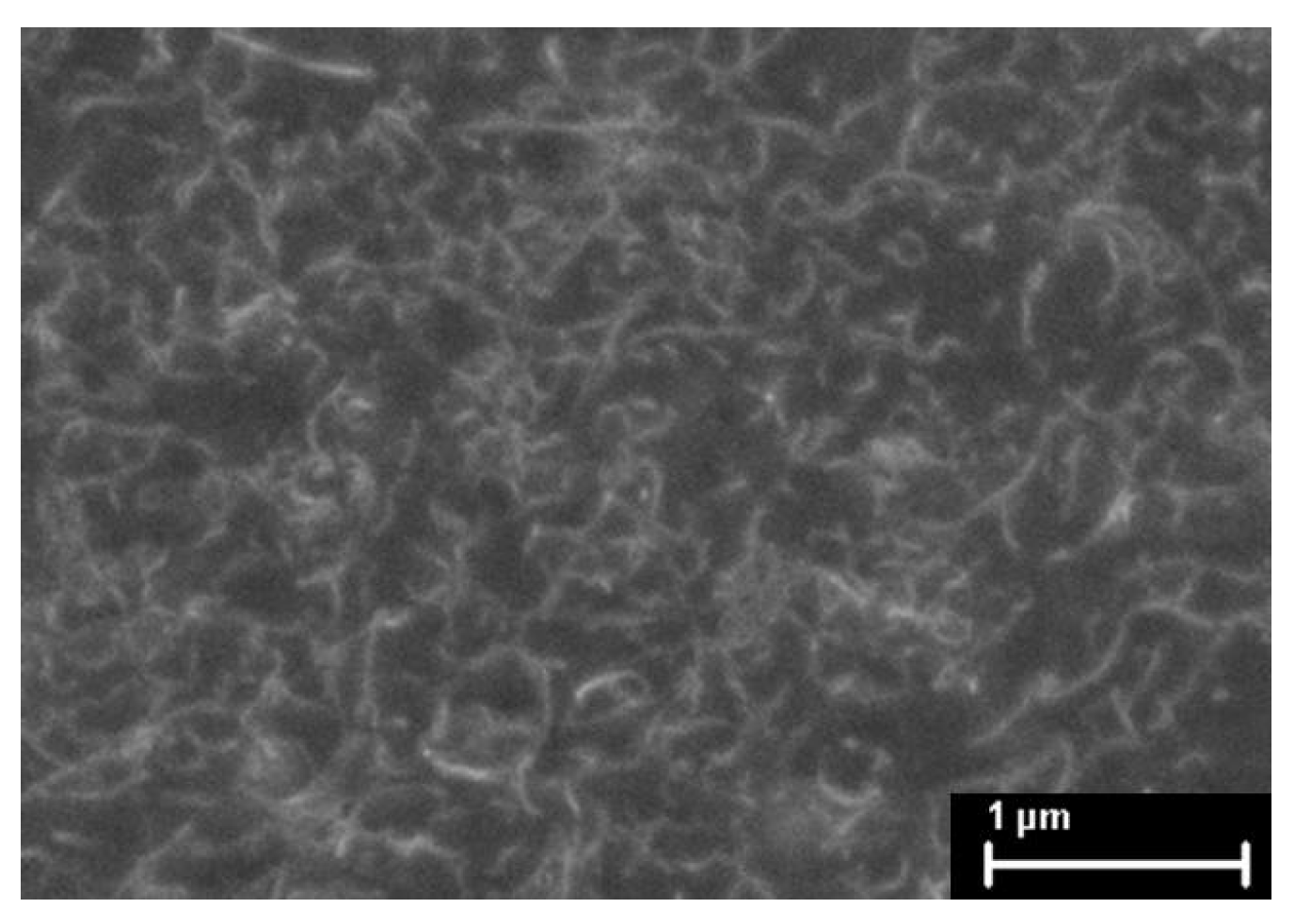
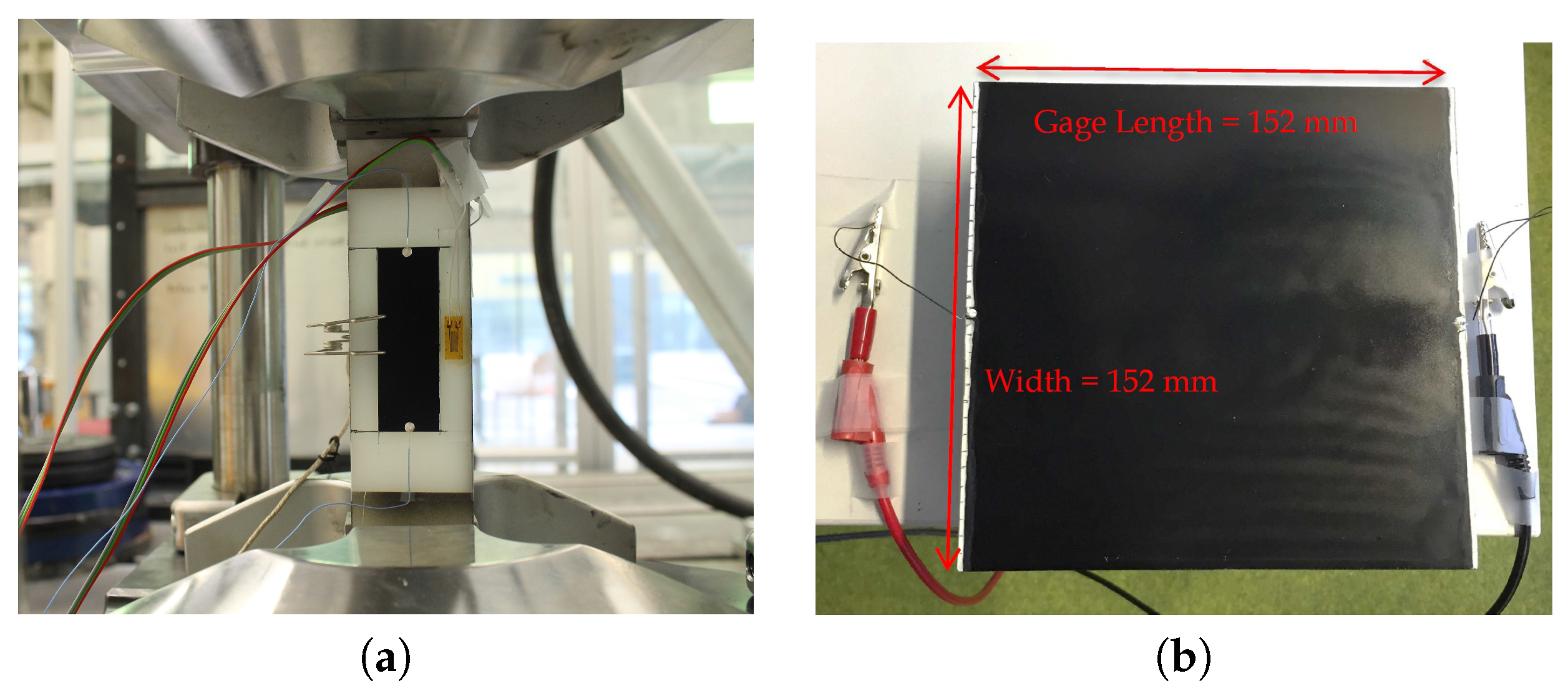
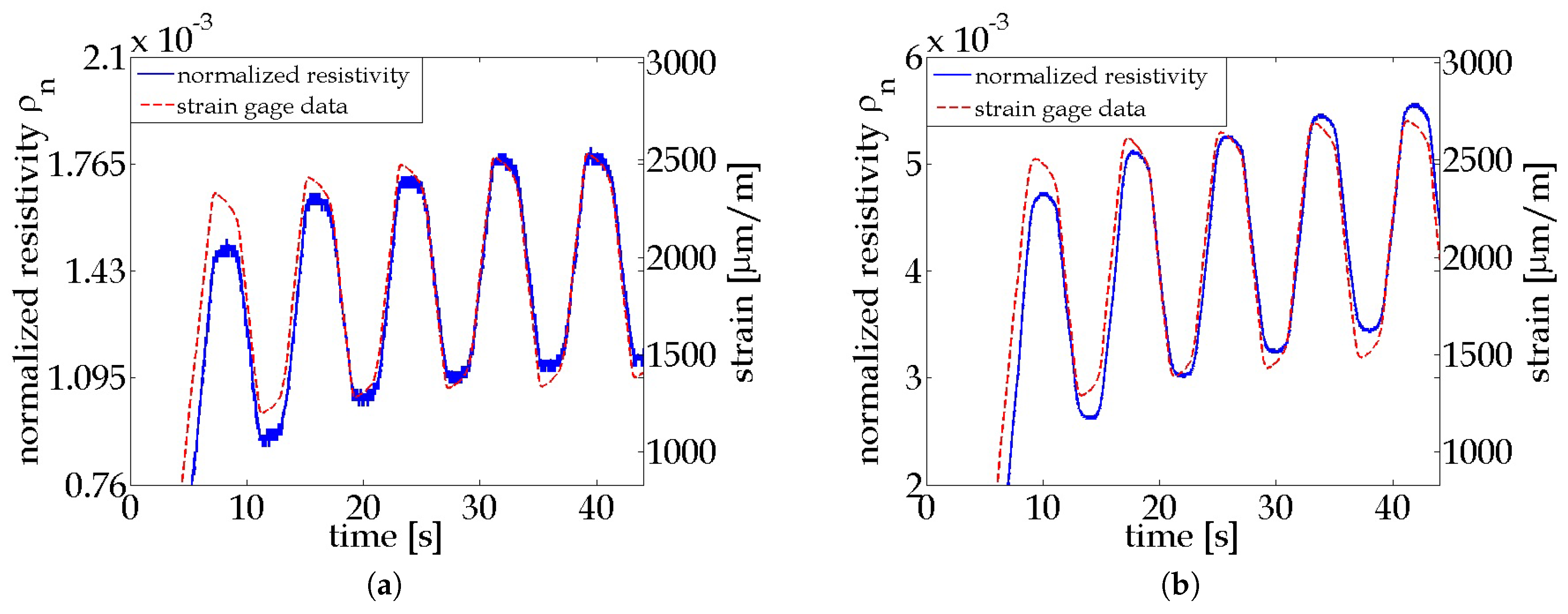
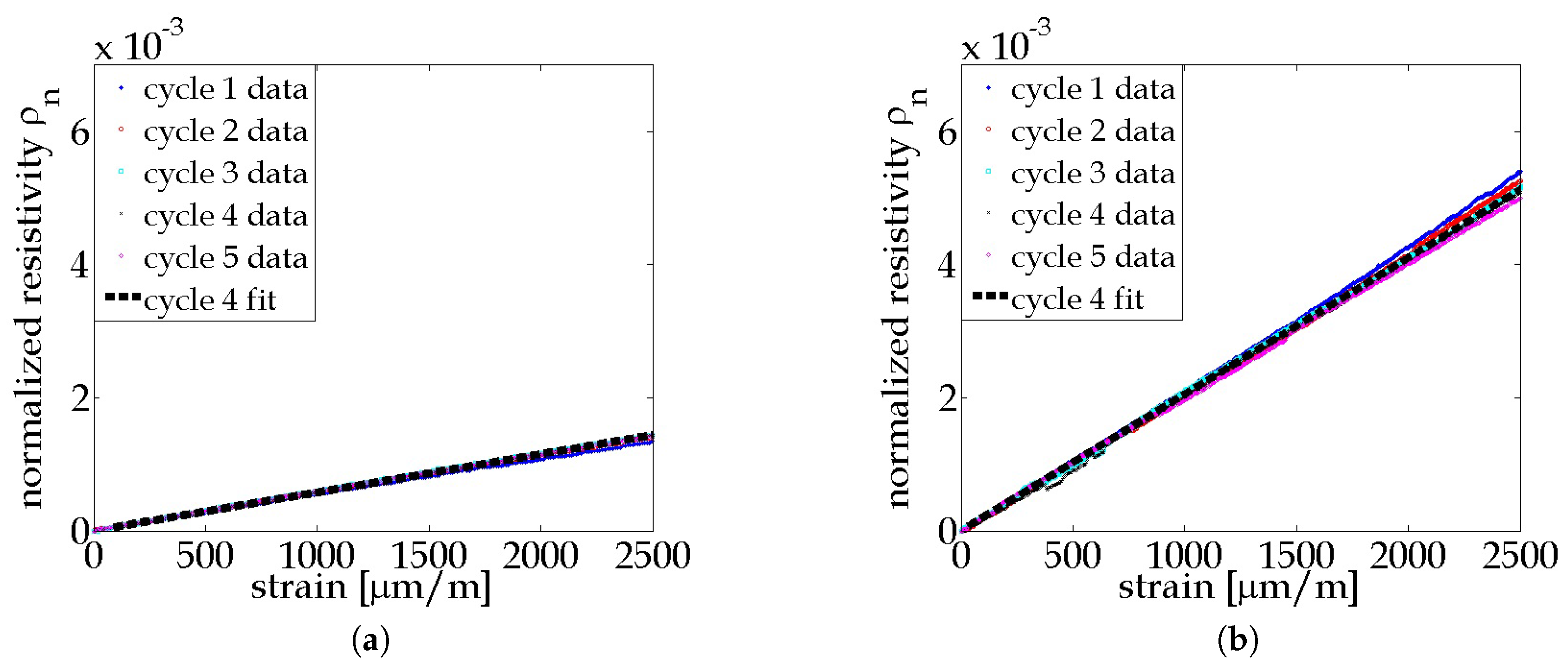
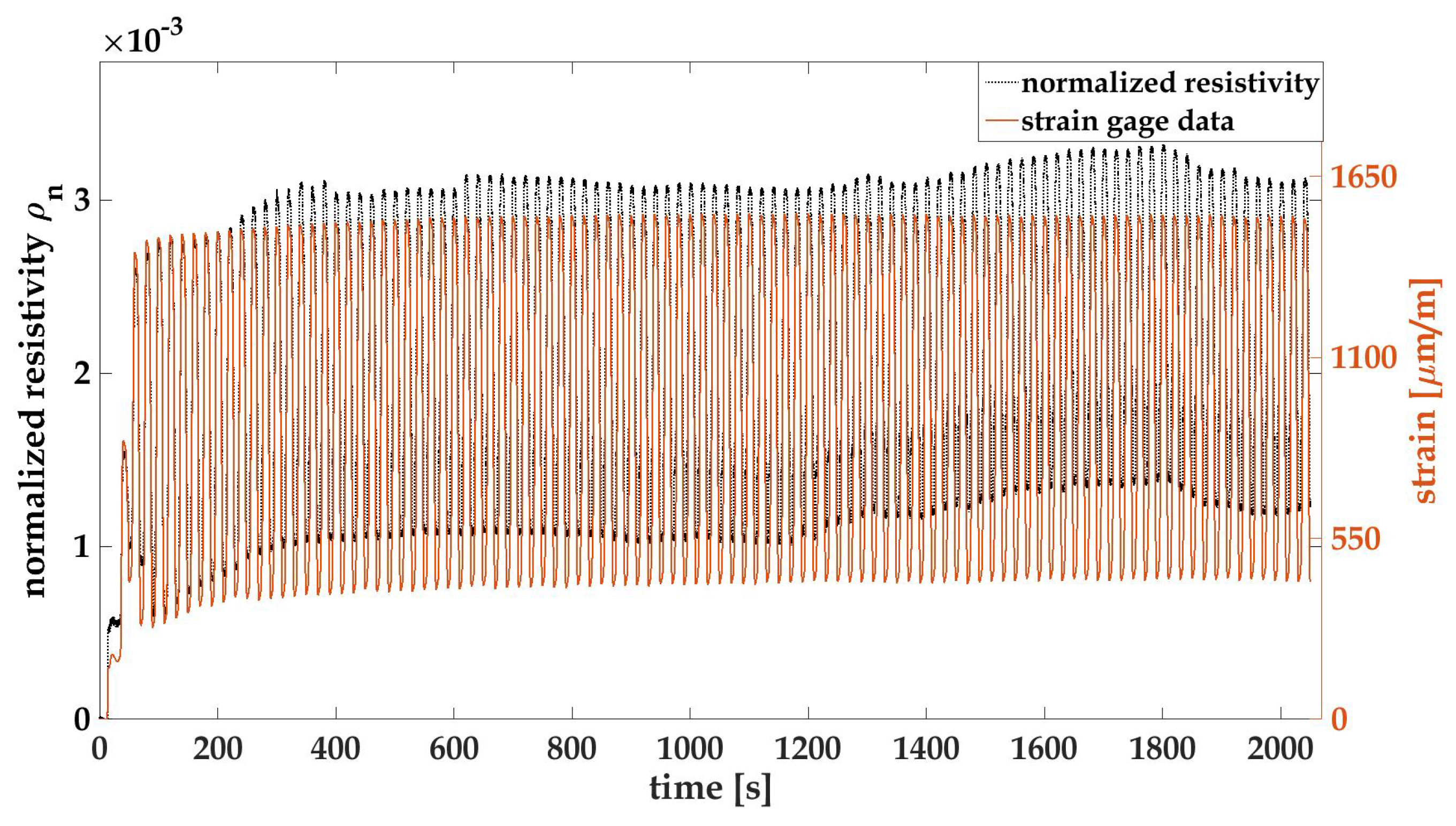
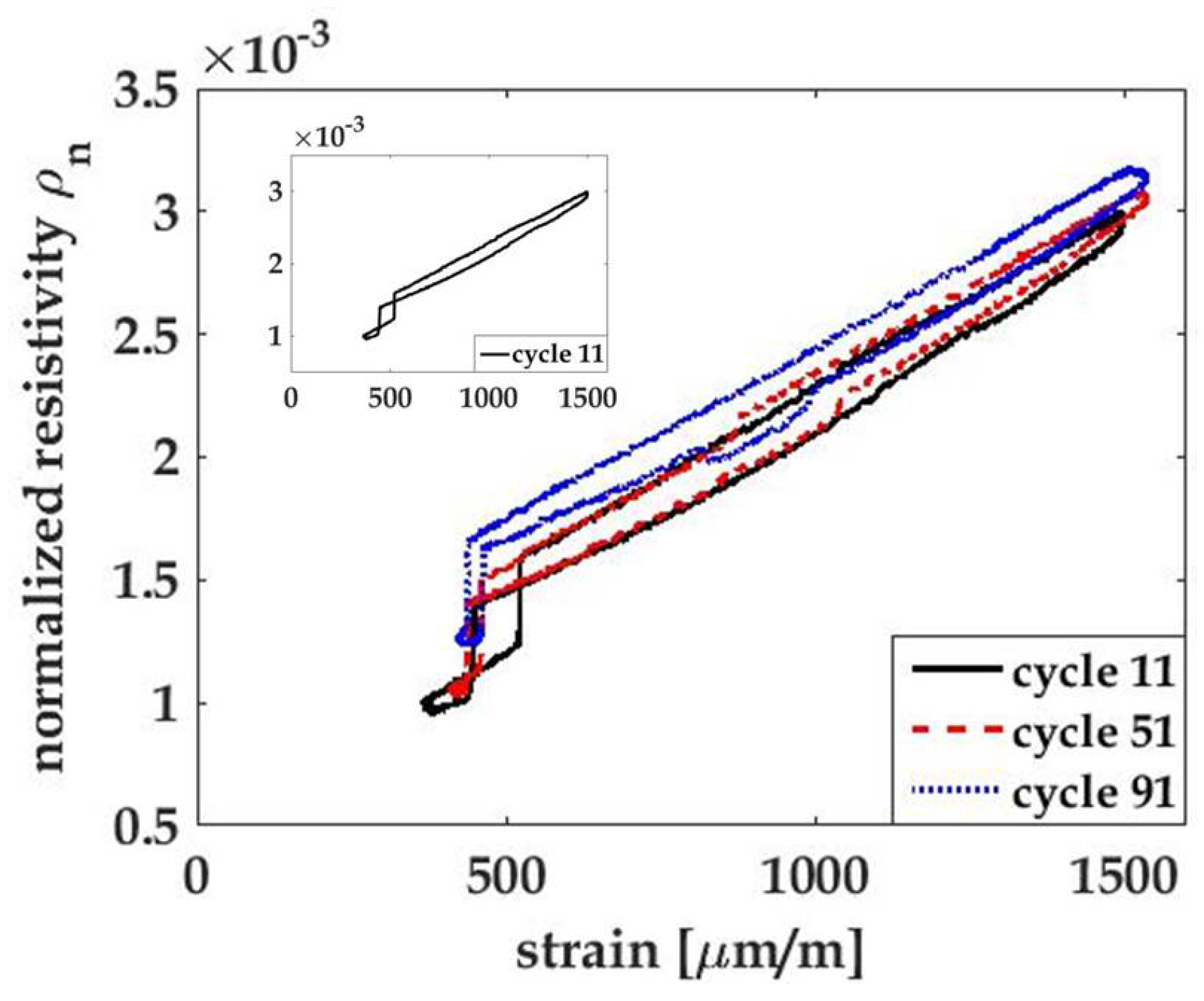
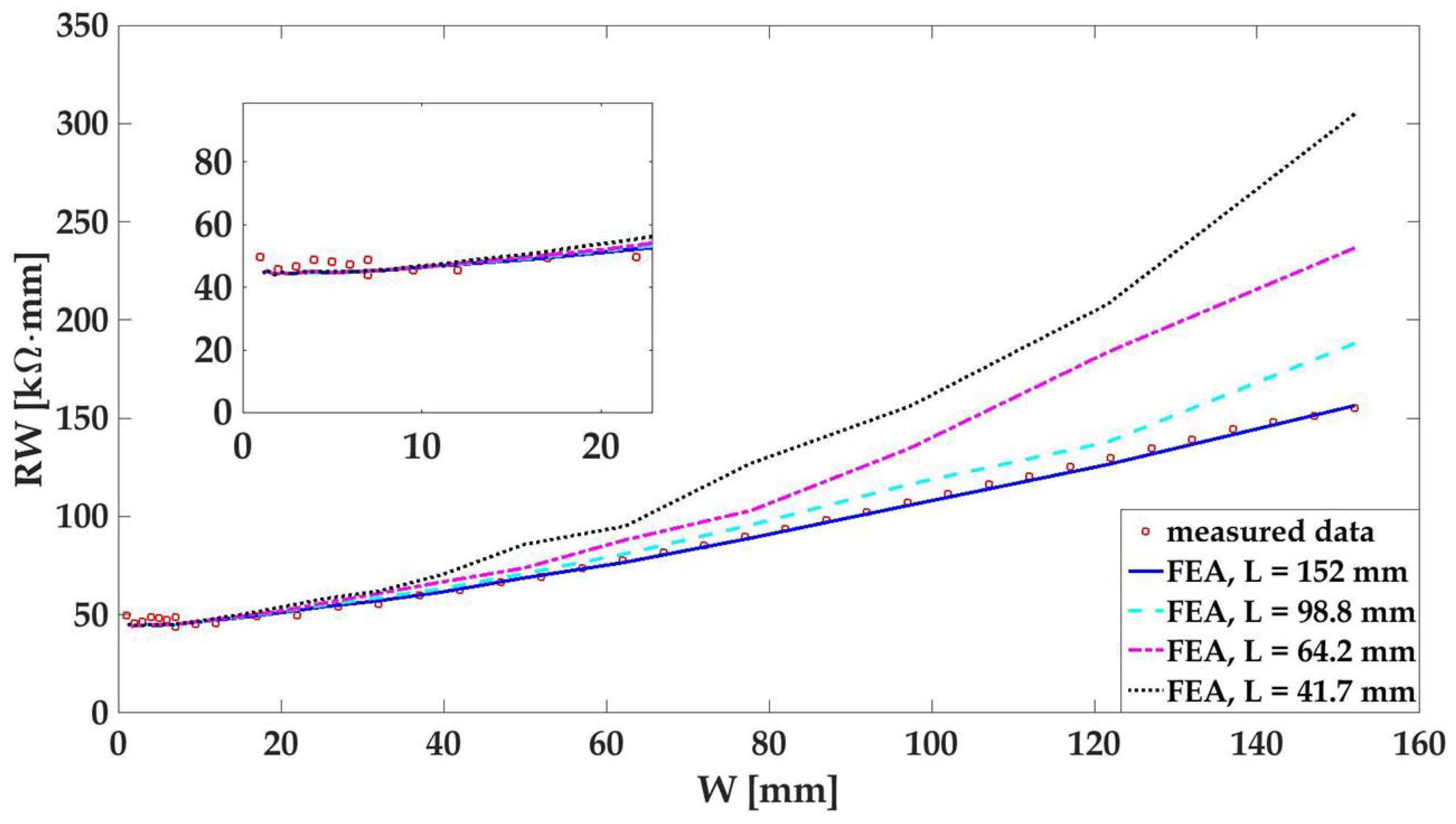
© 2017 by the authors. Licensee MDPI, Basel, Switzerland. This article is an open access article distributed under the terms and conditions of the Creative Commons Attribution (CC BY) license (http://creativecommons.org/licenses/by/4.0/).
Share and Cite
Zhao, Y.; Schagerl, M.; Viechtbauer, C.; Loh, K.J. Characterizing the Conductivity and Enhancing the Piezoresistivity of Carbon Nanotube-Polymeric Thin Films. Materials 2017, 10, 724. https://doi.org/10.3390/ma10070724
Zhao Y, Schagerl M, Viechtbauer C, Loh KJ. Characterizing the Conductivity and Enhancing the Piezoresistivity of Carbon Nanotube-Polymeric Thin Films. Materials. 2017; 10(7):724. https://doi.org/10.3390/ma10070724
Chicago/Turabian StyleZhao, Yingjun, Martin Schagerl, Christoph Viechtbauer, and Kenneth J. Loh. 2017. "Characterizing the Conductivity and Enhancing the Piezoresistivity of Carbon Nanotube-Polymeric Thin Films" Materials 10, no. 7: 724. https://doi.org/10.3390/ma10070724





